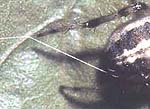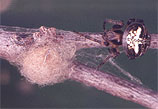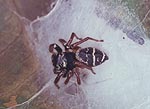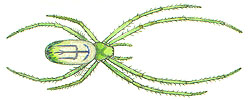 |
|
| You Are Here: Burke Museum : Spider Myths : General : Webs |
General Fallacies
Myth: All spiders make webs.
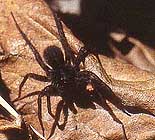
|
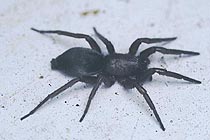
|
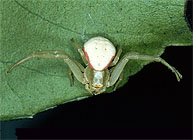
|
| Wolf spider Pardosa vancouveri (photo: Rod Crawford) Click image to enlarge |
Ground spider Zelotes fratris (from a photo by Markku Savela) Click image to enlarge |
Crab spider Misumena vatia (from a photo by Bob Thomson) Click image to enlarge |
| Examples of 3 hunting spider families, which make no webs. | ||
Fact: Technically, a web is not just anything
a spider makes out of silk; it is a silk structure made to catch prey. Only
about half of the known spider species catch prey by means of webs.
Others (shown above) actively hunt for
prey (including members of the wolf spider, jumping spider, ground spider, sac
spider, lynx spider, and other spider families), or sit and wait for prey to
come to them (trap door spiders, crab spiders, and others).
Hunting spiders use their silk for the dragline (the single thread all spiders
leave behind them when they walk), the egg sac, and in some species, the retreat
(a little silk "house" the spider rests in), all shown
below, but do not make true webs.
| Previous Myth | Myths Home | Web Resources | Next Myth |
 |
Text ©
2003, Burke Museum of Natural History & Culture, University of Washington, Box 353010, Seattle, WA 98195, USA Phone: 206-543-5590 Photos © as credited |
Queries
to Spider Myths author, Rod Crawford This page last updated 2 September, 2010 This site best viewed at 800 x 600 using IE 5.0 or above. |
